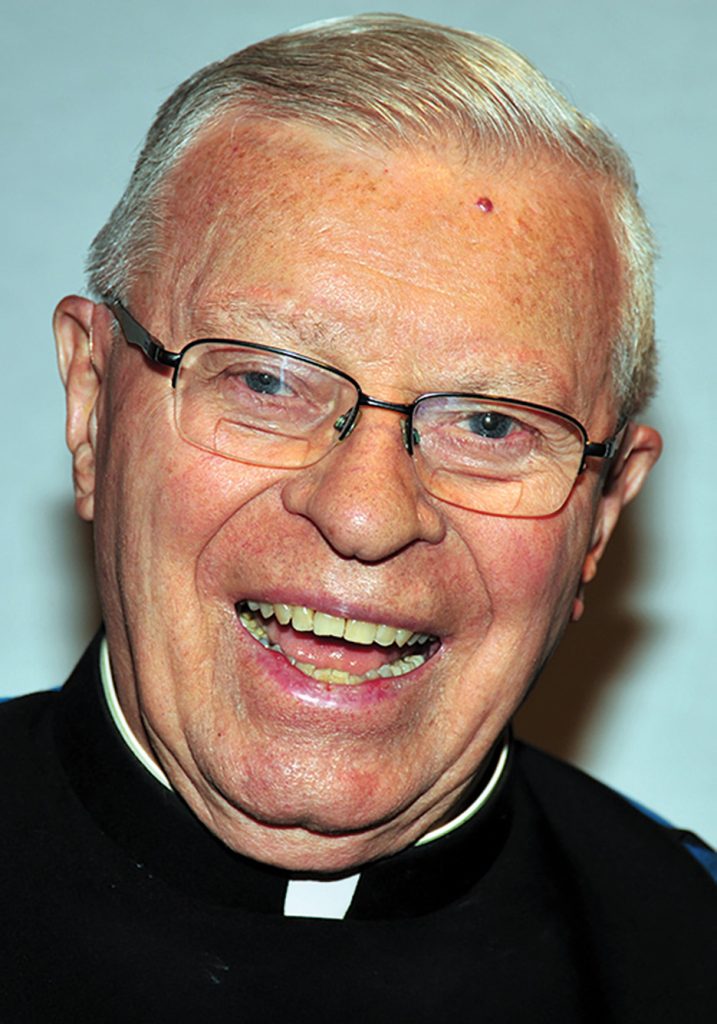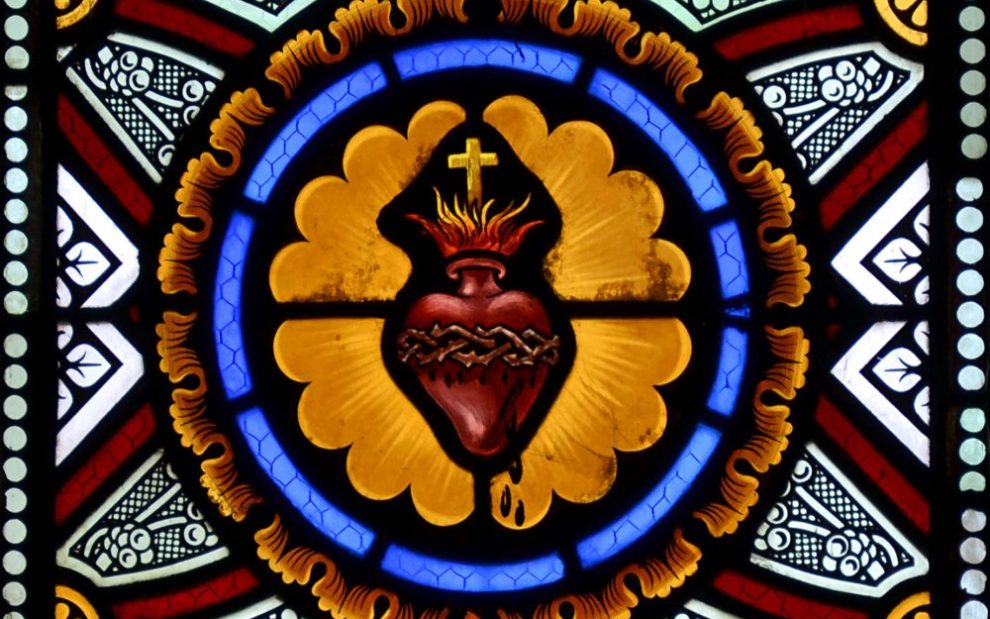Ignatian spirituality famously analogizes discernment with falling in love as the touchstone for finding God in everyday life.
Jesuit Father George Aschenbrenner’s life and ministry is a testament of one who fell in love with God, and this divine love empowered him to accompany many people—priests, religious, and laity—who desired to encounter this love.

He held many titles, including novice master, spiritual director, retreat master, and director of spiritual formation at the Pontifical North American College in Rome.
But he was not a man of titles, except for one: child of God.
Aschenbrenner experienced a deep intimacy with the Trinity. He desired to share this with every person he encountered, whether it be the priests and seminarians under his direction, Jesuit novices, religious men and women, or laypeople. His face exuded a childlike joy that communicated to each person he met the gift of abundant life that Jesus came to offer us all (John 10:10).
I consider Aschenbrenner to be a spiritual grandfather. As one of the cofounders of the Institute for Priestly Formation (IPF), established at my alma mater, Creighton University, Aschenbrenner led diocesan seminarians in the Spiritual Exercises of St. Ignatius of Loyola to cultivate an intimacy with the divine Trinity and to center their respective vocations in the heart of God.
One of Aschenbrenner’s colleagues was his former novice—and later fellow IPF cofounder—Jesuit Father John Horn, who graciously served as my spiritual director my senior year at Creighton.
Aschenbrenner imparted to Horn a sensitivity to the Spirit’s movement in a directee, codiscerning the Trinity’s movement in the directee as well as remaining attentive to God’s movement in the director. Likewise, Horn taught me to notice where God appeared in my prayers and daily life; to return to that place of God’s revelation; and to allow the gift of Godself to be savored, relished, and deepened.
In these powerful moments when God’s love became intimately revealed during spiritual direction, often leading me to profuse tears like St. Ignatius expressed in his spiritual diary, Horn would ask me to pause and acknowledge that we were standing on holy ground.
I am most grateful for this spiritual, intergenerational sharing in God’s gift of self. This has truly changed my life. During my short time as a Jesuit, I felt inspired to pick up the Jesuit phone directory and call Aschenbrenner, even though we had never met.
I was very surprised he actually answered the phone. I quickly regurgitated what I had memorized: that I was grateful for his writings and work in Ignatian spirituality, which inspired me to help others in their relationship with God.
More surprisingly though, Aschenbrenner spoke to me like he already knew me. His voice was filled with joy and warmth. He expressed how happy he was that I called and that I wanted to accompany people in their prayer.
The phone conversation was quick, but it had a profound impact on me. Even though I did not remain a Jesuit, I encountered in that call someone so in touch with God that his familiarity and warmth with me was not an accident. Rather, by his very presence, Aschenbrenner imparted to me God’s deep and unfathomable love for me. I felt known by him because God knows me (Ps. 139:1)—and Aschenbrenner knows God.
There are those rare people who look at us and listen to us as if we are the most important person in the world. This was Aschenbrenner in a nutshell.
Connecting all of these themes—Aschenbrenner’s gift of being present with people, reflecting God’s intimate love and joy, and noticing God’s action in a directee—is a living testimony of his seminal and most famous 1972 article, “Consciousness Examen.”
Many of us grew up with an understanding of the examination of conscience as an act of recalling the sins we committed so that we could make a thorough confession.
Aschenbrenner offered a renewed understanding of the Ignatian Examen prayer, shifting the focus from conscience to consciousness, from a negative focus on bad actions to a positive awareness of God’s revelation in our day. He emphasized that God’s encounter in our lives communicates love, mercy, and gratitude.
Sin, on the other hand, is when we choose to turn away from God’s loving encounter, or, more commonly, when we miss God’s invitation to receive divine love and share this love with our neighbor. In these instances, the remedy is not to focus on how we missed the mark but to accept God’s healing embrace and resolve to begin anew.
Aschenbrenner indicates that praying the Examen can lead us to a greater awareness of God’s presence in our daily lives, particularly how God speaks to us through the people we encounter and the situations we are in. Our ordinary day becomes sanctified with the interior knowledge that God is always with us.
A great teacher is also a great practitioner. Aschenbrenner’s Daily Examen offered him the grace to remain present and reflect God’s love and warmth to each person he encountered.
Aschenbrenner expanded on his seminal work to link two centuries-old Ignatian devotions—the Examen and the Sacred Heart of Jesus—in his essay “Consciousness Examen: Becoming God’s Heart for the World.”
Aschenbrenner identifies that the Examen can lead us to a deeper understanding of God’s longing for us and our inherent desire for God. This longing is perfectly imaged in the Sacred Heart of Jesus, pierced and broken for us on Calvary (John 19:34), where Jesus offered us his entire being out of his deep love for us.
The Examen, therefore, allows us to taste in our everyday experiences the Trinity’s outpouring of the divine self-gift to us. It teaches us to fall in love and stay in love—a love that transforms us and leads us to union with God.
Aschenbrenner, who passed from this life in 2021, continues to shine God’s warmth and light to all. He models how each of us can become God’s heart for the world.
This article also appears in the January 2023 issue of U.S. Catholic (Vol. 88, No. 1, pages 45-46). Click here to subscribe to the magazine.
Image: Wikimedia Commons














Add comment